Lenovo IdeaPhone K900 Review
An imposing phone, the K900 sports an impressive build, a great display, solid performance, and rather decent camera. For what is Intel's first serious attempt at the high-end smartphone market, currently dominated by Qualcomm's Snapdragon series of processors, this is a rather good beginning. However, heating issues need to be sorted quickly, if the IdeaPhone K900 is any indication.
Build & Design: Huuuuuge!
The IdeaPhone K900 has a lot of things working in unison here. It is big, there are the straight lines but with slightly curved spines, and the completely flat design. The phone is so flat that it rests on a table with the weight evenly distributed, like on a slab!
Up front is the main highlight – the 5.5-inch IPS LCD display, flanked by three touch sensitive keys that blend brilliantly into the black finish, when not backlit. The right side spine has the SIM card slot and the power key. The IdeaPhone K900’s left spine has the volume rocker, and despite not being given any preferential treatment to make them that, they are very slim – the phone is just 6.9mm thick.
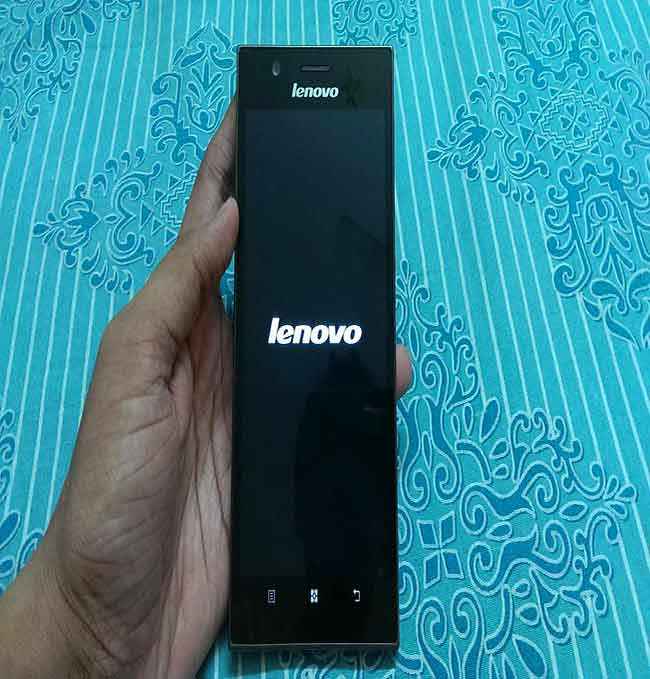 |
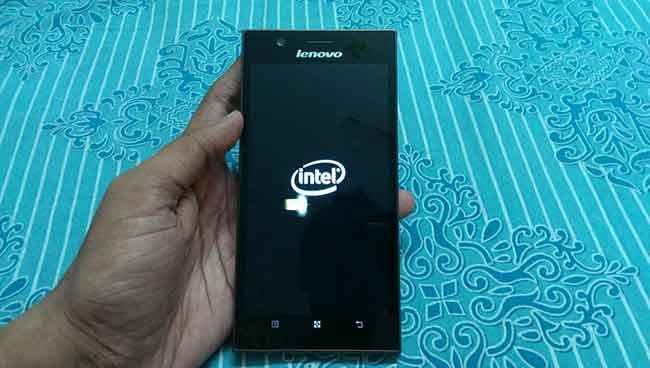 |
The IdeaPhone K900’s top is completely clean, while the bottom has the micro USB port and the 3.5mm headphone jack. Flip the phone over, and this is where the design, the build and the finish impressed us a lot. The phone that we received for review had a brushed metal silver finish on the battery cover, with slightly golden-ish bars at the top and bottom. The screws that hold the panel down are the highlight here, but we wouldn’t suggest making an attempt at opening them!
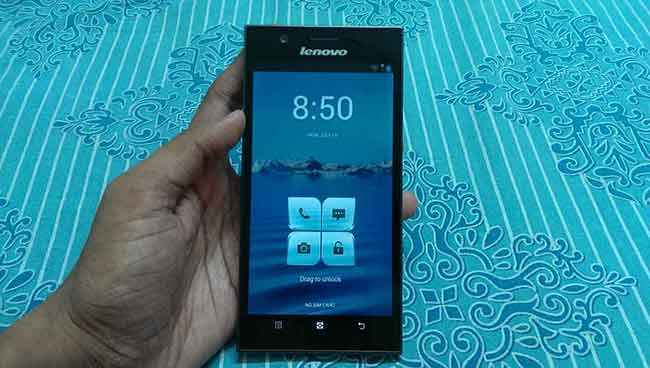 |
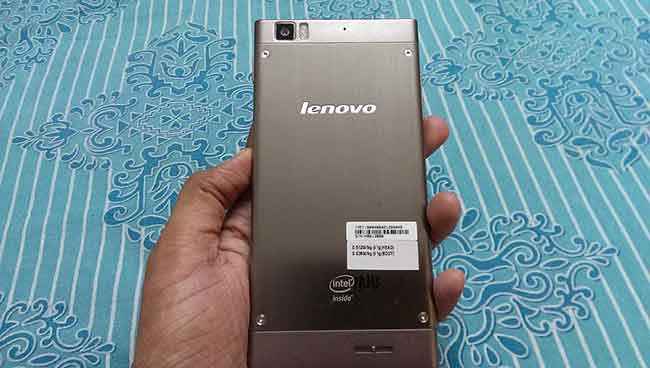 |
While this isn’t the first 5.5-inch display, the IdeaPhone K900 does feel a tad bigger than it might have. In this particular case, it is more the vertical length that sticks out, because of the thicker panel both above and below the display. Compared directly with the LG Optimus G Pro, which also rocks a 5.5-inch display, the IdeaPhone K900‘s bigger footprint is more than evident. Despite that, the phone is well balanced, and won’t show any urges of popping out of your hand suddenly. The scales tip at just over 160 grams, but the IdeaPhone K900 is deceptively light, and doesn’t feel bulky at all.
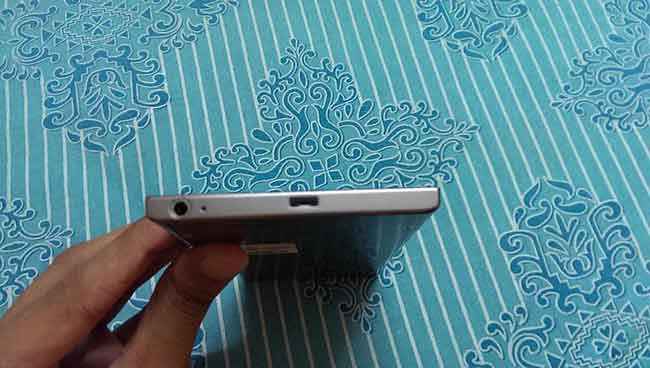 |
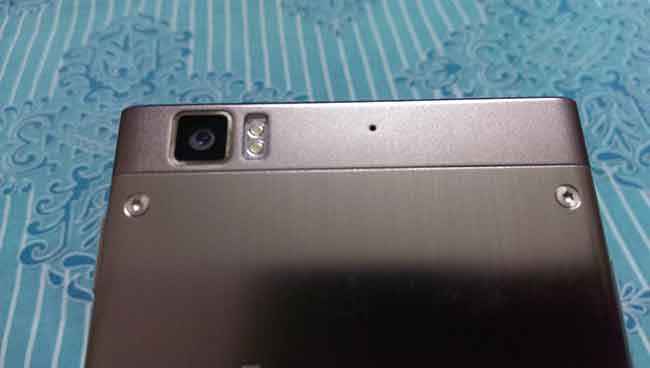 |
All in all, Lenovo sure made an effort to make their flagship phone feel its part, and the mission has been largely successful. The IdeaPhone K900 is built well, has an even weight distribution, and looks good. What they need to do next is make the footprint slightly smaller, next time out.
Display: 1080p brilliance
Lenovo has emplaced a 5.5-inch IPS LCD display with Gorilla Glass 2 on the IdeaPhone K900. This isn’t the first phone with a 1080p display – a lot have come and gone. However, this one would be among the best, comparable to the likes of the HTC Butterfly and the Sony Xperia Z, in terms of the aspects that matter – text readability, colour richness and brightness. The slightly smaller HTC One and the Samsung Galaxy S4 are the overall leaders, albeit with smaller screen sizes.
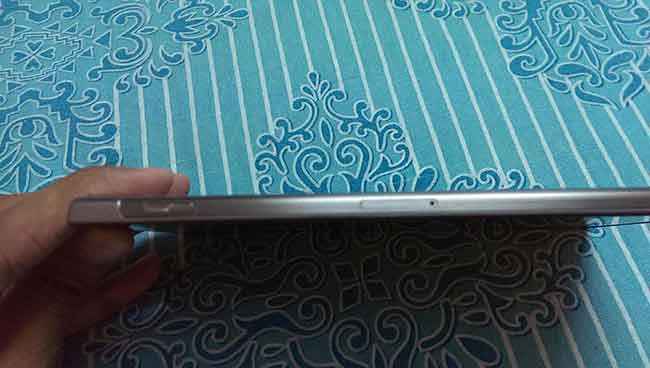 |
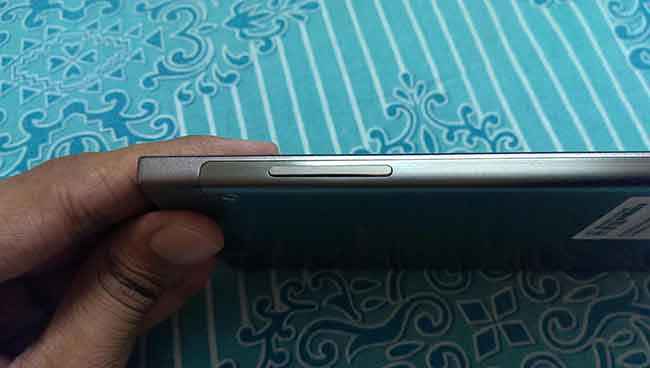 |
The IPS LCD panel of the IdeaPhone K900 is more realistic in terms of colour richness, and while on the outset looks less rich than the AMOLED family of displays, the reds and oranges are a lot more in check. Media playback on this screen is very good, and the good viewing angles help with that. The only thing it lacks is the pure depth of the black colours, which still feel a little washed out at times. Text is crisp and clean, making readability easy.
Visibility outdoors on the IdeaPhone K900’s display is good, but only at brightness levels above 50%. Anything lower, and the reflective glass on the display pretty much makes stuff unreadable at lower brightness levels.
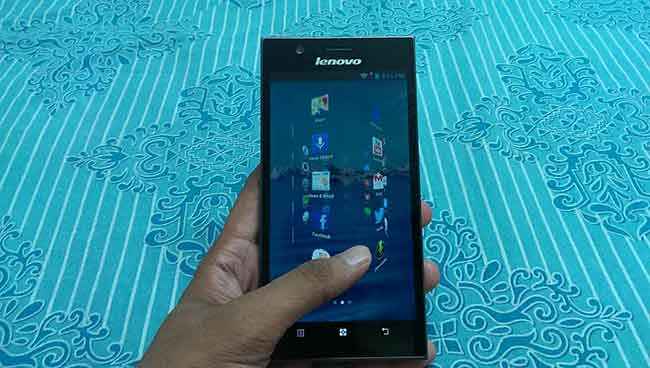 |
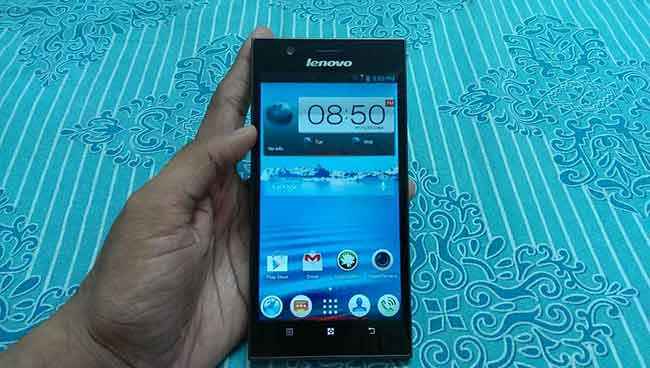 |
Interface: Not forgetting the roots
Lenovo has not forgotten its roots, and the UI it sent out its previous generation of smartphones and tablets with. This is true at least for the homescreen, and its design of the three shortcuts and the unlock widget. The three apps that you can directly access from the lock screen are the dialer, messages and camera.
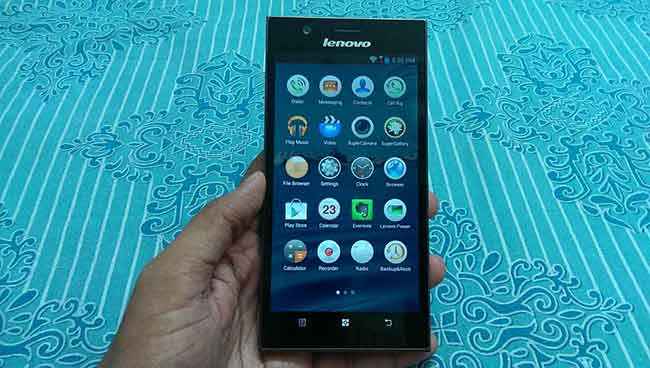 |
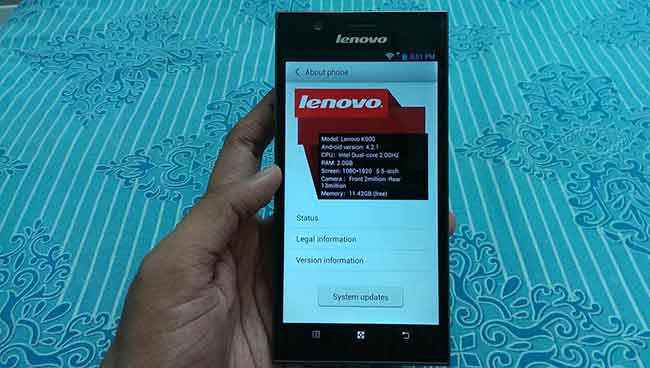 |
Since the IdeaPhone K900 runs Android 4.2.1 (Jelly Bean), there is another little goodness waiting for the users – widgets on the lock screens! There are three screens, including the main lock screen, and you can currently use the following widgets on the screens – calendar, Gmail, Google Now and Google . To access these, you need to swipe right or left on the lock screen itself, without unlocking the phone. However, this gesture isn’t the smoothest, and you will need to take a couple of stabs at successfully moving to one of the other lock screens.
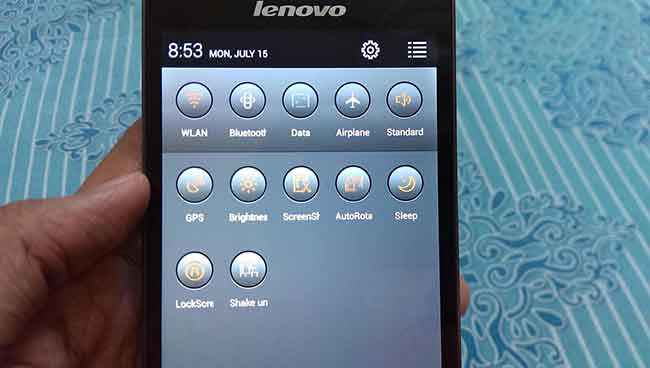 |
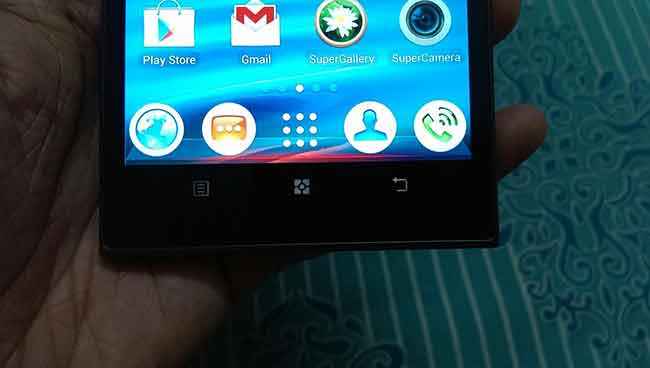 |
Unlock the IdeaPhone K900, and this is where the minimalism again comes to the fore. Apart from the bunch of custom widgets that you may or may not use, the UI remains largely un-tweaked, apart from the redone icons, most of which are now circular. Also, there is a two layer customization drop-down from the notification bar, for quick access to critical settings. We appreciate the lack of customization on the rest of the UI.
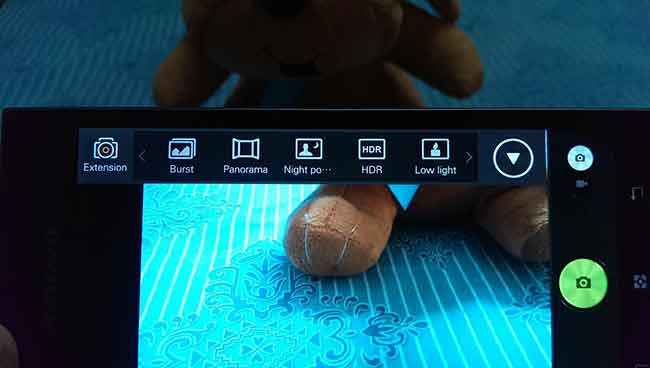 |
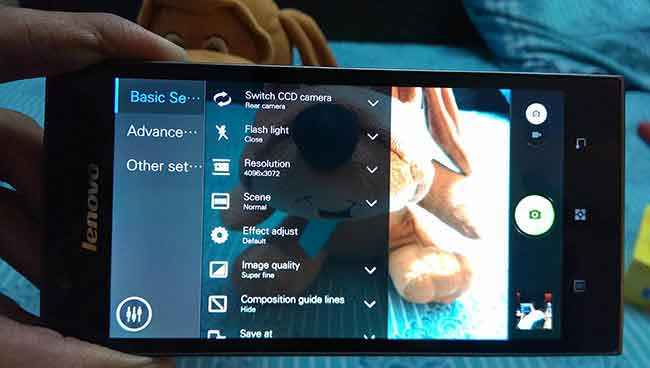 |
Performance: Numbers shouldn’t devalue real performance
It is surprising that Lenovo still hasn’t put in something like a Fast Boot mode, something on the lines of what HTC did with the One. Boot time on the IdeaPhone K900 is around 12-15 seconds, as against 4-6 seconds on the One. Not a major thing, but something to work on for the next update, probably.
On a more serious note, the Intel Atom Z2580 processor is a part of Intel’s latest CloverTrail SoC. This dual-core chip will clock up to 2GHz, and has Hyper-Threading active. This processor is much further down the road than the Medfield SoC we saw on the Xolo X900.
The graphics bit is handled by the PowerVR SGX544 chip, also seen in a slightly tweaked version on the Samsung Galaxy S4 and the Amazon Kindle Fire HD 8.9, although we are getting a bit carried away into the tablets category here!
Before we get into the details of the real world usage performance of the IdeaPhone K900, let us first take a look at some benchmark scores, to put the performance in perspective and to whet the appetite of the fan of numbers.
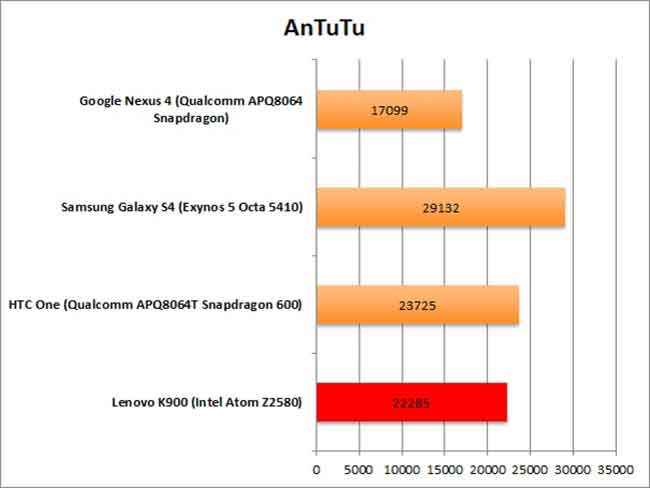 |
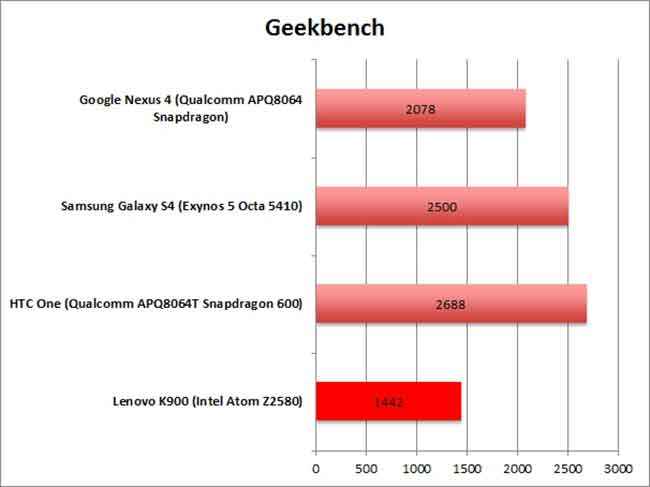 |
In the system benchmark tests, the Intel processor does come up behind the likes of the Qualcomm Snapdragon processors in the HTC One and the Google Nexus 4, and obviously behind the octa-core monster in the Samsung Galaxy S4. While this doesn’t mean the performance is lagging, the fact that the IdeaPhone K900 falls behind in scores means two things – 1. The Intel family of processors still has a long way to go before it can match up to the more established rivals and 2. The synthetic benchmarks will inevitably be better optimized for Intel’s processors as time goes on.
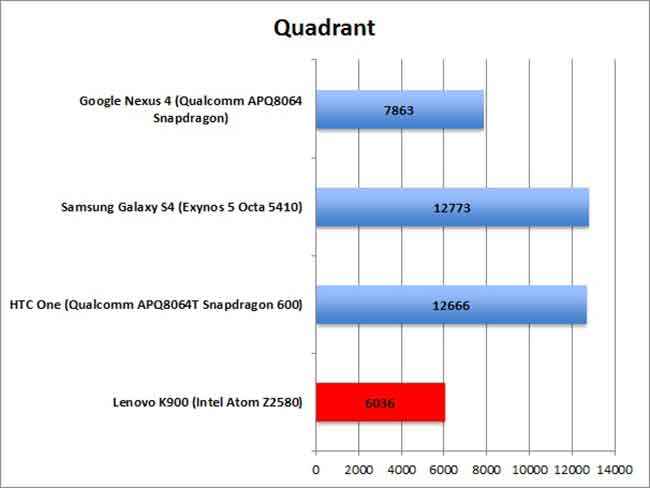 |
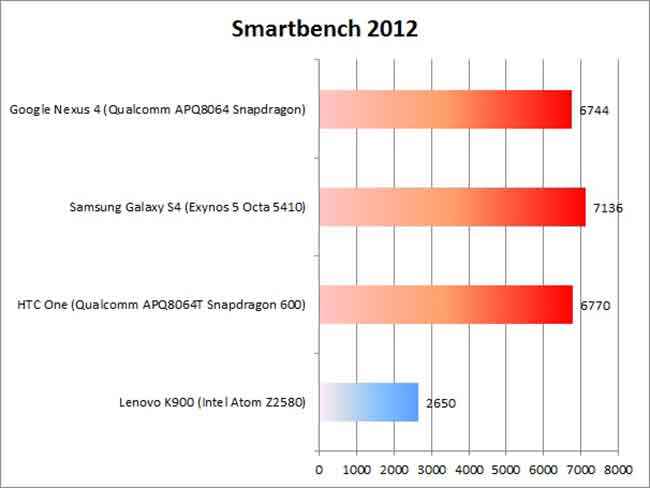 |
In real world usage, there were no lags or stutters as the IdeaPhone K900 went along on its merry way, bowing to every demand we made of it. Apps open quickly, and even background app load only extracted the odd stutter. However, the IdeaPhone K900 heats up even under the slightest of load, and under gaming, can become uncomfortably warm to hold. Play Real Racing HD on it for 20 minutes, and you will know what we are talking about. This will have a detrimental impact on the components in the long run, particularly the health of the battery. This is something that we had noticed in the first-gen Intel smartphones as well, and the issue remains as such, even now.
Speaking of which, the IdeaPhone K900’s gaming performance is very good. On the big screen, the experience gets heightened considerably. Again, in the 3D Mark benchmark tests, the IdeaPhone K900 is beaten to the top spot by all other phones when it came to less intensive games, but interestingly, the PowerVR SGX544 held its own when the gaming got tough, and won the 3D Mark – IceStorm Extreme benchmark battle comfortably. And this shows in the real world performance as well. The Real Racing 3 game, which is a fairly heavy game that brings most phones to their knees, ran smoothly on the IdeaPhone K900. During gameplay, there were no stutters or lost frames, even as the landscape blurred past at rapid speed. As a phone to game on, the IdeaPhone K900 is a delight to use. As long as you don’t burn your fingers!
Camera: Very Impressive, for the most part
The 13MP clicker on the IdeaPhone K900 is a rather interesting snapper. Lenovo calls it the Super Camera, and it is pretty much doing a super-human job of things. The settings are very detailed, which is something most phones tend to cut down on these days. The settings aren’t outlandish, but the fact that stuff like quality, scene, resolution etc., are available just gives the user a bit more control over how the final image might look. This is essentially the Sony Exmor RS sensor, with the aperture of f1.8 for better low light shots. That is a rather impressive spec sheet, but most cameras tend to disappoint when the going gets tough. Not this one, though!
The IdeaPhone K900’s camera quality is rather impressive. To start with, there is very minimal shutter lag, and on a side by side comparison of the same shots, the IdeaPhone K900’s camera is slightly quicker than the HTC One’s Ultra Pixel clicker. However, we must clarify that the IdeaPhone K900‘s camera is a tad slow in HDR mode, because the post click processing takes a tad longer than it does on most phones.
In good lighting conditions, most cameras can hold their own, and the IdeaPhone K900’s is no different, with the snapper taking some very vivid and detailed images. The colour richness and sharpness near the edges makes the image stand out. The Indoor test shot of scene with the magazine and other objects is very crisp, rich colour and detailed, with absolutely no noise – both without and with HDR. If there is one niggle that we can pick, it is that the red colour on the magazine cover is becoming a tad over-bearing in the HDR mode. Same goes for the outdoor shot, but in this case, the green of the leaves becomes more vivid and life-like with HDR.
 |
 |
 |
 |
| Indoors – Close Up – Good Light | Indoors – Close up – Good Light – with HDR | Outdoors – Good Light | Outdoors – Good Light – with HDR |
In low lighting conditions, the IdeaPhone K900’s camera holds its own against the likes of the HTC One, which tends to do very well in low light conditions. Noise is minimal, detailing is more welcome! The close up of the MacBook keyboard is proof of that, because the alphabets on each key are fairly sharp, and the backlighting isn’t leaking onto the keys. The close up of the McLaren F1 car, without HDR, is again a much better effort than what most smartphones can conjure up. Yes, there is some bit of noise, particularly on the edges, but the image is still fairly detailed. The image, with HDR on, is not very good, admittedly. There is a lot of noise, as the camera is compensating for the low light. Text still remains very much readable, but colour has too many gradients. Videos are very good when shot in good lighting, but tend to suffer a bit from slow focus and a bit of noise in low light. Panned shots are smooth, something most phones cannot boast of.
 |
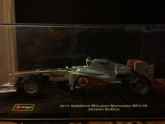 |
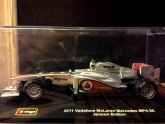 |
| Low Light Close-Up | Low Light | Low Light – With HDR |
Battery: Powering a huge display and a “hot” phone
For a phone that packs in a big 2500mAh battery, the IdeaPhone K900 does suffer in this regard because of heating. It is a given that when operating in higher temperatures, battery discharge quickens. The IdeaPhone K900 will last a day, like most Android phones. Fully charge it at the time when you are leaving for work in the morning, use this as the primary phone all day, with a couple of hours of voice calls, Facebook Messenger and Whatsapp chats, 15 minutes of web browsing and a few SMSes, auto brightness on and the charge was down to 18% by dinner time the same evening. If you happen to switch this off at night, it might get you through another couple of hours the next morning, but then the charger will be a mandatory accessory. While the phone has a big battery, one also needs to realize that it is powering a huge screen as well, and the distractions that go along with it. But, if the heating issue is resolved, we believe this battery could offer a slightly better backup, as well as have a longer life in general.
Software: A case of two clear halves
Lenovo has preloaded the IdeaPhone K900 with some software, but a couple caught our eye. One is the Lenovo Power app, giving you detailed settings on what to keep on and what to turn off – data, Wi-Fi etc. This app also gives the statistics on how much backup time potentially remains, and even the charging status when plugged in. This app allows you to turn on the Endurance mode, to extend battery life when you may realize that a charger isn’t in the horizon for the next few hours, by turning off some connectivity options and tweaking the screen settings.
The second notable native app on the IdeaPhone K900 is the Super Gallery, which named on the same lines as the Smart Camera. The picture gallery itself gets the HTC Zoe kind of effects – animated image thumbnails showing up. The detailed options show – Jigsaw, GIF and Magic GIF. All three of these, quite honestly, are fairly useless features. Jigsaw allows you to set a bunch of images in a collage form, through various predefined templates. We couldn’t really see the purpose of that. The second is the GIF, which will take a bunch of shots and give you what is basically an animated image, allowing you to set how many images to take initially, and which ones to finally use. Magic GIF also does pretty much the same task, from what we figured out, but doesn’t have the pick and choose feature before making the final image.
Buy or not buy: Still needs some improvement and refinement
The Lenovo IdeaPhone K900 is indeed a very competent phone. It is built brilliantly, and clearly, the Lenovo designers have put in a lot of heart into this. The Intel processor also does a good job, testified by the competent performance of the IdeaPhone K900. Yes, it isn’t setting the benchmark sheets on fire, but that isn’t the sole criteria for deciding a phone’s performance. But, whether you buy this phone or not will largely depend on if you need the big screen or not. Yes, the 5.5-inch real estate is impressive, but not everyone will be comfortable using a phone this big. If you are one who likes the big screen phones, the IdeaPhone K900 is a very good option at around Rs. 29,000. If not, then save a few pennies, and go for the LG Nexus 4, which costs around Rs. 25,000.
Check out our video review of the Lenovo Idea Phone K900 below.

